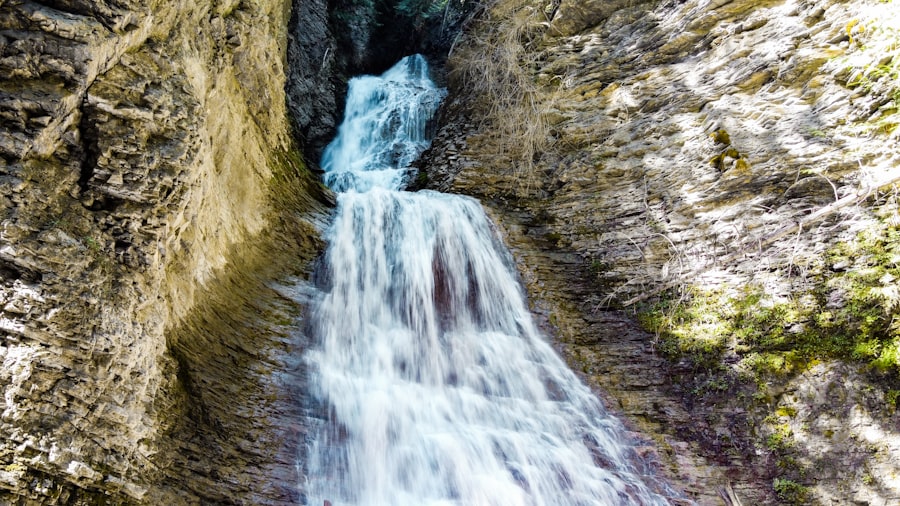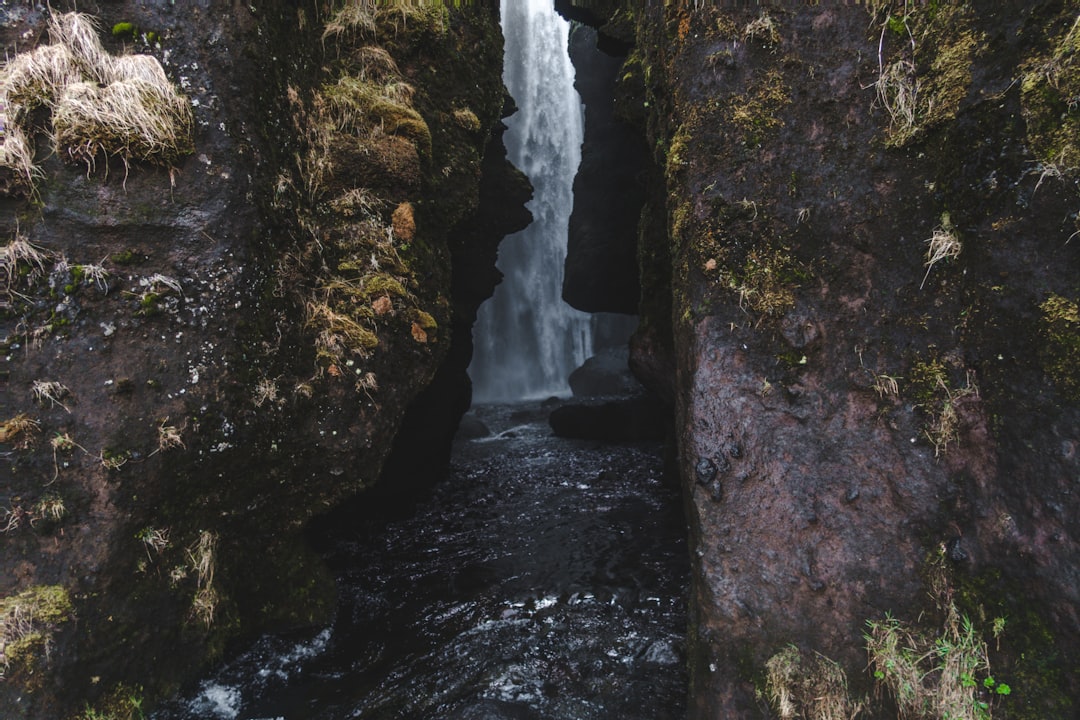The Drake Passage, a body of water situated between the southern tip of South America and Antarctica, is renowned for its tumultuous seas and unpredictable weather patterns. This narrow stretch of ocean, measuring approximately 800 kilometers (500 miles) wide, serves as a critical conduit for marine life and plays a significant role in global oceanic circulation. The passage is named after the English explorer Sir Francis Drake, who navigated these waters in the late 16th century.
Today, it remains a vital route for vessels traveling to and from Antarctica, attracting adventurers, researchers, and tourists alike. The flow of water through the Drake Passage is influenced by a complex interplay of currents, winds, and geographical features. The Antarctic Circumpolar Current, which encircles the continent of Antarctica, is the most significant current in this region.
It flows from west to east and is responsible for the unique marine ecosystem found in these waters. The passage’s dynamic nature not only shapes the physical environment but also impacts the weather patterns experienced by those who dare to traverse it. Understanding the intricacies of the Drake Passage flow is essential for anyone planning a journey through this remarkable yet challenging maritime corridor.
Key Takeaways
- The Drake Passage is a challenging and iconic route for ships traveling between South America and Antarctica.
- Weather and currents in the Drake Passage can be unpredictable and extreme, requiring careful navigation and planning.
- Choosing the right vessel for navigating the Drake Passage is crucial for a safe and comfortable journey.
- Safety precautions, including proper gear and emergency protocols, are essential for crossing the Drake Passage.
- Tips for dealing with sea sickness, such as medication and acclimatization, can help travelers enjoy their journey through the Drake Passage.
Understanding the Weather and Currents in the Drake Passage
The weather in the Drake Passage is notoriously volatile, characterized by rapid changes that can occur within a matter of hours. This unpredictability is primarily due to the convergence of cold polar air from Antarctica and warmer air from the north, creating a battleground for contrasting weather systems. As a result, travelers can experience everything from calm seas to fierce storms in a single day.
The region is also known for its strong winds, which can reach speeds of over 60 knots, making navigation particularly challenging. Currents in the Drake Passage are equally complex. The Antarctic Circumpolar Current flows continuously, driven by the Earth’s rotation and wind patterns.
This current not only influences local weather but also affects global ocean circulation, playing a crucial role in regulating climate patterns worldwide. Additionally, tidal currents can create localized eddies and whirlpools, further complicating navigation. For those venturing into these waters, a thorough understanding of both weather and currents is essential for ensuring a safe and successful crossing.
Choosing the Right Vessel for Navigating the Drake Passage

Selecting an appropriate vessel for navigating the Drake Passage is paramount for ensuring safety and comfort during the journey. Given the passage’s reputation for rough seas and unpredictable weather, vessels must be designed to withstand challenging conditions. Ice-strengthened ships are often preferred for expeditions to Antarctica, as they are built to endure ice encounters and turbulent waters.
These vessels typically feature reinforced hulls and advanced stabilization systems to minimize rolling and pitching. In addition to structural integrity, the size and type of vessel can significantly impact the experience of those on board. Smaller expedition ships offer a more intimate atmosphere and greater maneuverability, allowing for closer encounters with wildlife and ice formations.
Conversely, larger cruise ships may provide more amenities and comfort but can be less agile in navigating narrow passages or rough seas. Ultimately, choosing the right vessel involves balancing safety considerations with personal preferences for comfort and adventure.
Safety Precautions for Crossing the Drake Passage
| Safety Precautions | Description |
|---|---|
| Life Jackets | All passengers are required to wear life jackets during the crossing. |
| Emergency Drills | Crew members conduct emergency drills to prepare passengers for potential emergencies. |
| Weather Monitoring | The crew closely monitors weather conditions to ensure safe passage. |
| Experienced Crew | The ship is staffed with experienced crew members trained in safety procedures. |
Safety should always be a top priority when crossing the Drake Passage. Given its reputation for unpredictable weather and rough seas, travelers must be well-prepared for any eventuality. One of the most critical safety measures is ensuring that all passengers are briefed on emergency procedures before departure.
This includes familiarization with life jackets, lifeboats, and communication protocols in case of an emergency. Additionally, it is essential to monitor weather forecasts closely during the journey. Modern technology allows vessels to access real-time weather updates, enabling crews to make informed decisions about navigation routes and potential hazards.
Passengers should also be encouraged to stay informed about their surroundings and report any concerns to crew members promptly.
Tips for Dealing with Sea Sickness in the Drake Passage
For many travelers, sea sickness can be a significant concern when crossing the Drake Passage. The combination of rough seas and unpredictable weather can lead to discomfort for even seasoned sailors. To mitigate these effects, it is advisable to take preventive measures before embarking on the journey.
Over-the-counter medications such as antihistamines or prescription patches can help alleviate symptoms if taken prior to departure. In addition to medication, adopting certain strategies during the crossing can also prove beneficial. Staying hydrated and consuming light meals can help maintain energy levels while minimizing nausea.
Engaging in activities that distract from feelings of discomfort—such as watching wildlife or participating in onboard lectures—can further help travelers cope with sea sickness during their journey through the Drake Passage.
Wildlife Spotting Opportunities in the Drake Passage

The Drake Passage is not only known for its challenging conditions but also for its rich biodiversity. This unique marine environment serves as a habitat for various species of wildlife, making it an exciting destination for nature enthusiasts and wildlife watchers. Among the most sought-after sightings are various species of whales, including humpback whales, orcas, and minke whales that migrate through these waters during certain seasons.
In addition to whales, seabirds are abundant in the Drake Passage. Albatrosses, petrels, and other seabirds can often be seen soaring above the waves or diving into the water in search of food. The presence of these magnificent creatures adds an extra layer of wonder to any journey through this region.
Travelers are encouraged to keep their cameras ready and remain vigilant while on deck to capture these unforgettable moments of wildlife encounters.
Navigation Challenges and Strategies in the Drake Passage
Navigating the Drake Passage presents numerous challenges due to its unpredictable weather patterns and strong currents. Mariners must remain vigilant at all times, as conditions can change rapidly from calm to chaotic within minutes. One of the primary navigation challenges is dealing with large swells that can create hazardous conditions for vessels of all sizes.
To successfully navigate these challenges, experienced crews employ various strategies. Utilizing advanced navigational technology such as GPS and radar systems allows them to monitor their position accurately while assessing potential hazards ahead. Additionally, maintaining constant communication with other vessels in the area can provide valuable insights into changing conditions or emerging dangers.
By combining traditional seamanship skills with modern technology, crews can enhance their ability to navigate safely through this formidable passage.
Historical Significance of the Drake Passage
The historical significance of the Drake Passage cannot be overstated. It has long been a critical route for explorers seeking to reach Antarctica and has played a pivotal role in maritime history. Sir Francis Drake’s expedition in 1578 marked one of the first recorded crossings of this treacherous waterway, paving the way for future explorers who would follow in his footsteps.
Throughout history, many notable figures have traversed these waters in pursuit of discovery or trade. The passage has served as a gateway for scientific research expeditions aimed at understanding Antarctica’s unique ecosystems and climate patterns. Today, it continues to attract adventurers eager to explore its rugged beauty while honoring its rich legacy as a site of exploration and discovery.
Environmental Conservation in the Drake Passage
As interest in exploring the Drake Passage grows, so too does the need for environmental conservation efforts in this fragile ecosystem. The waters surrounding Antarctica are home to diverse marine life that plays a crucial role in maintaining global biodiversity. However, increased human activity poses potential threats to this delicate balance.
Conservation organizations are actively working to protect marine habitats within the Drake Passage by advocating for sustainable practices among tour operators and researchers alike. Initiatives aimed at reducing pollution from vessels and minimizing disturbances to wildlife are essential components of these efforts. By promoting responsible tourism practices and raising awareness about environmental issues facing this region, stakeholders hope to preserve its natural beauty for future generations.
Cultural and Scientific Expeditions in the Drake Passage
The cultural and scientific significance of expeditions through the Drake Passage extends far beyond mere exploration; they contribute valuable knowledge about our planet’s climate systems and ecosystems. Researchers from around the world embark on voyages through these waters to study everything from ocean currents to marine biology. Cultural expeditions also play an important role in fostering understanding between different communities and cultures connected by their shared interest in Antarctica’s unique environment.
These journeys often include educational components that highlight indigenous perspectives on conservation or showcase local art inspired by nature’s beauty. By blending science with culture, expeditions through the Drake Passage enrich participants’ experiences while promoting greater awareness about pressing environmental issues.
Making the Most of Your Journey through the Drake Passage
Embarking on a journey through the Drake Passage is an adventure filled with challenges and rewards alike. From navigating unpredictable weather patterns to spotting incredible wildlife, travelers have ample opportunities to create lasting memories while exploring this remarkable region. By preparing adequately—choosing the right vessel, prioritizing safety precautions, managing sea sickness effectively—adventurers can enhance their experience significantly.
Moreover, understanding both historical significance and environmental conservation efforts surrounding this area adds depth to any expedition through these waters. As travelers set sail across one of Earth’s most iconic maritime routes, they not only embark on a physical journey but also engage with history, culture, science—and ultimately contribute toward preserving this extraordinary environment for generations yet unborn.
The Drake Passage is a crucial oceanic corridor that connects the Atlantic and Pacific Oceans, playing a significant role in global ocean circulation and climate regulation. For those interested in exploring more about the dynamics of ocean currents and their impact on the environment, a related article can be found on MyGeoQuest. This article delves into the intricacies of oceanic flows and their broader implications. To read more, visit the related article on MyGeoQuest.
WATCH NOW! Drake Passage: Earth’s Deadliest Waters Revealed
FAQs
What is the Drake Passage flow?
The Drake Passage flow refers to the movement of ocean currents through the Drake Passage, which is the body of water between South America’s Cape Horn and the South Shetland Islands of Antarctica.
What causes the Drake Passage flow?
The Drake Passage flow is primarily driven by the Antarctic Circumpolar Current (ACC), which is the strongest current in the world. The ACC flows from west to east through the Drake Passage, connecting the Atlantic, Pacific, and Indian Oceans.
Why is the Drake Passage flow significant?
The Drake Passage flow plays a crucial role in global ocean circulation and climate. It allows for the exchange of water, heat, and nutrients between the different ocean basins, influencing the Earth’s climate and marine ecosystems.
How does the Drake Passage flow impact marine life?
The Drake Passage flow influences the distribution of marine species by transporting nutrients and plankton across ocean basins. It also affects the migration patterns of marine animals, such as whales and seabirds, as they navigate through the passage.
Are there any challenges associated with the Drake Passage flow?
The Drake Passage is known for its rough seas and strong winds, making it a challenging area for maritime navigation. The strong currents and turbulent weather conditions can pose risks to ships and research vessels traveling through the passage.
